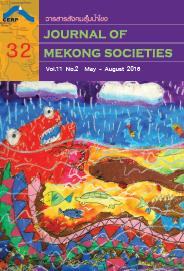Integration and Creativeness: The Application of Southern China Vernacular in Qilou
Main Article Content
Abstract
The term “vernacular architecture” refers to the popular building style of an era among common people. In Mainland China, commercial buildings with arcades emerged for the first time in Guangzhou city, Guangdong province at the beginning of the 20th century. This style of building was influenced by
overseas and by Southern Chinese vernacular architecture. The construction method and style gained popularity in a short period of time. It was a result of a transformation of the construction that was applied to the living environment under the new requirements. These modern buildings were called “Qi Lou”. The present case study reveals its creativeness in function through the trial and error of vernacular architecture that has taken place over many generations. Thus, the style has been applied to the needs that changed over time, while adding more features to the original. However, it still covers human basic needs that never change or become obsolete, having a good quality of life or living in comfort environment. That includes physical and psychological comfort.


